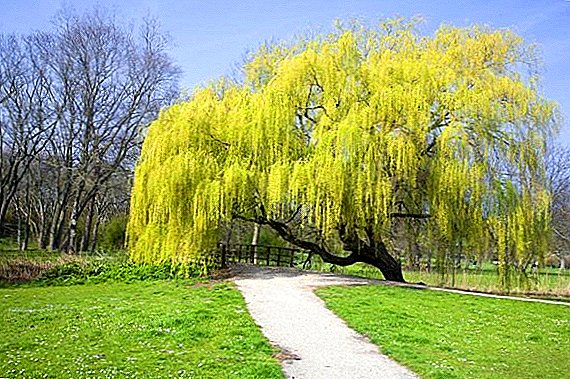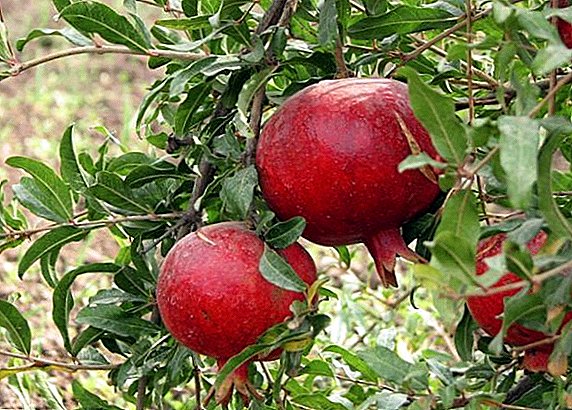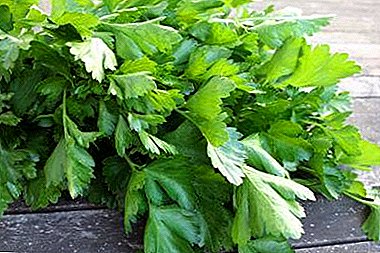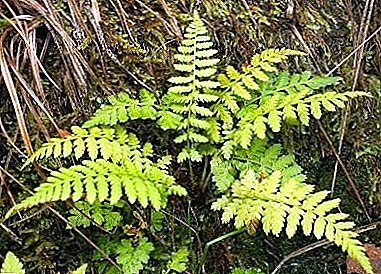 The greenhouse is one of the most common buildings for those who have their own garden or vegetable garden. But it is not always possible to buy a ready-made option or hire people to build, and wrapping film with a film is simply not practical, then comes the option of building a greenhouse from window frames with your own hands. But in order to properly and successfully accomplish everything, it is necessary to become familiar with the features of the construction of such a structure.
The greenhouse is one of the most common buildings for those who have their own garden or vegetable garden. But it is not always possible to buy a ready-made option or hire people to build, and wrapping film with a film is simply not practical, then comes the option of building a greenhouse from window frames with your own hands. But in order to properly and successfully accomplish everything, it is necessary to become familiar with the features of the construction of such a structure.
Window frames as a building material
Old window frames are one of the best options for building materials for the greenhouse, since wooden bases are harmless to plants, and glass perfectly passes the necessary amount of light and ultraviolet rays to vegetables and greens. Glass, unlike other materials, can protect from almost all weather conditions, including small hail.

It is also quite an economical option, since they are in almost every home after changing windows to plastic ones, or they can be inexpensively purchased. Since the plants still need air circulation, the design can be designed in such a way that one or several windows can be opened for a while.
Did you know? The Crystal Palace in London is a greenhouse, although international festivals and events take place there.
Pros and cons of the construction of window frames
Like any structure, here you can identify a number of positive and negative sides. The positive points include:

- option is quite economical;
- a properly constructed greenhouse of window frames is able to maintain the necessary temperature for the plants, especially in cold weather;
- self-build is possible;
- glass care is much simpler than polyethylene or polycarbonate;
- weather protection;
- various variations of construction are possible;
- Easy glass replacement when necessary.
But there are also negative sides:
- in spring and summer, the temperature in the greenhouse may be too high with improper ventilation;
- very large hail can damage glass;
- it is necessary to carefully prepare materials for construction;
- if the greenhouse is large, it needs a foundation.

Thus, we see that most of the drawbacks can be easily fixed if desired.
If you have just decided to acquire a polycarbonate greenhouse, it will be useful for you to study all the design features of these greenhouses; find out what kind of foundation is suitable for this greenhouse, how to choose polycarbonate for your greenhouse, and also how to make a greenhouse from a polycarbonate with your own hands, how to properly handle the greenhouse.
Preparation of materials and tools
First of all, you need to calculate your own time for the construction, because when you fill the foundation you need to wait more than a week so that it finally stops and is ready for further work.

The second important point is the preparation of wooden frames, because the tree quickly loses its appearance, deteriorates and lends itself to various damages, then do the following:
- Take out the glass in order to carefully handle the entire frame.
- Remove old paint or varnish from the frame.
- Get rid of various unnecessary elements: nails, hinges, buttons, etc.
- Treat wood with antiseptic.
Important! Processing of wooden frames is mandatory, otherwise they will eventually rot.
The remaining materials do not require such thorough preparation. For construction will need: cement, water, sand, nails, screws, film or other material for coating, hermetic tool, wooden slats.

Also required are such tools:
- screwdriver;
- drill;
- hacksaw;
- hammer;
- cutting pliers;
- pliers;
- Master OK;
- shufel;
- shovel.
Instructions for construction
In order to build a strong, durable and reliable construction, you need to know how to build each element of the greenhouse.
In the greenhouse you can also grow melon, tomatoes, radishes, cucumbers, bell peppers, eggplants, strawberries.
Foundation casting
First of all, it is necessary to determine the size of the greenhouse, based on the number of frames, as well as the location. It should be over 2 meters from all sides of any other structures.

- First, dig a trench according to the perimeter of the future greenhouse. The minimum depth is 50 cm, but in order to know the exact figure, you need to clarify the characteristics of land cover in your region and the level of freezing of the ground, too.
- Arrange a flat surface with the help of boards, create a formwork.
- Fill the bottom of the trench, you can use cement directly for this purpose, but you can use stones, metal or other materials to save material.
- The foundation itself is poured with cement, concrete, rubble to the top of the formwork.
- The drying period of the foundation is 2 weeks.
- Remove the formwork.
- Insulate the foundation around the perimeter with the help of waterproofing agents or roofing felt.
Important! The foundation is necessarily necessary if the height of the greenhouse walls of the window frames exceeds 1.5 meters.
Flooring
Before laying it is necessary to do the drainage of the floor, for this, dig a trench of 15 cm and cover it with rubble or other material; this is done so that large amounts of water do not accumulate inside the greenhouse.

For the floor itself, you can use concrete, brick, porcelain, sawdust, wooden flat boards.
Adjusting the tracks is necessary, based on the size of the greenhouse and the planned planting of plants. It is recommended to make a special pillow from a mixture of sand and crushed stone or gravel before laying the track.
Arrangement of beds
Typically, the width of the beds is no more than 1 meter. Based on this and the type of plants that are planned to grow, you need to and make passes between plants, it is necessary to take into account the growth of plants. For example, when planting, cucumbers do not take up so much space as they did during flowering. You can also pre-install additional mounts in order to support the plants.

Construction of the frame
The construction of the frame is one of the most important parts in the construction of the greenhouse. The most optimal material are boards no more than 5 cm thick. From them it is necessary to carry out a binding, for a fastening metal corners are used.

Initially, the lower part is performed in two rows of boards. After the construction of the lower part, you must use boards (up to 5 cm) for vertical columns. On them with the help of screws, the window frames themselves are attached.
Did you know? The largest greenhouse in the world is in the UK, it consists of 6 domes, each of which is more than 1.5 hectares!
All cracks formed must be filled with foam. For a more reliable effect, additional vertical beams can be installed from the inside to support the structure. It is also possible at the initial stage to install vertical supports directly into the cement base.

Greenhouse cover
After the construction of the frame, you must go to the roof. There are two options: single and dual gable. Creation of elements is recommended to be carried out on the ground, and only then they should be placed and fixed on the frame. Installation takes place with screws. Particular attention should be paid to the choice of the coating itself, since temperature, strength and resistance to weather conditions depend on it.
Learn how to build a greenhouse from plastic and polypropylene pipes, wood, according to Mitlayder, as well as with an opening roof.
Polycarbonate
One of the most popular coatings is polycarbonate. It is a translucent material that is elastic. The positive aspects of such coverage include:
- little weight;
- a large area, one sheet can cover the roof of a small greenhouse;
- elastic material, you can choose the shape of the roof with bends;
- at the same time it has a certain rigidity, namely, it does not bend due to precipitation;
- retains heat well and lets in sunlight.

The disadvantages include:
- non-transparent coating;
- may collect moisture;
- rather expensive option;
- requires replacement once every 10 years.
Polyethylene
Most often greenhouses are covered with polyethylene or film, this is due to the fact that it is easy and cheap to purchase and is not difficult to install, Other advantages also include:
- availability;
- retains heat well;
- easy to replace;
- very elastic material.

The disadvantages include:
- unstable to weather conditions;
- requires frequent replacement;
- easy to damage.
Also, for arrangement of your site you can make wattle, rock arias, a swing, a bench, an arbor, a fountain, a waterfall.
Window frames
Window frames themselves as roof material are not the most common option, This is due to several reasons:
- complex installation process;
- heavy material;
- in case of damage to the glass, it will be difficult to replace.

But there are a number of advantages:
- withstands all weather conditions;
- many compartments can be made for ventilation;
- best transmits light and heat.
Thus, we can see that a greenhouse can be made independently from window frames, but for this it is necessary to determine the place, materials, number of available window frames and follow the specifics of the instructions at each stage of construction.
Video: How to make a greenhouse with your own hands
Feedback from network users
The top of the frames have not yet fastened. Greenhouse size: width 3.7m, length 5m, height 2m.















